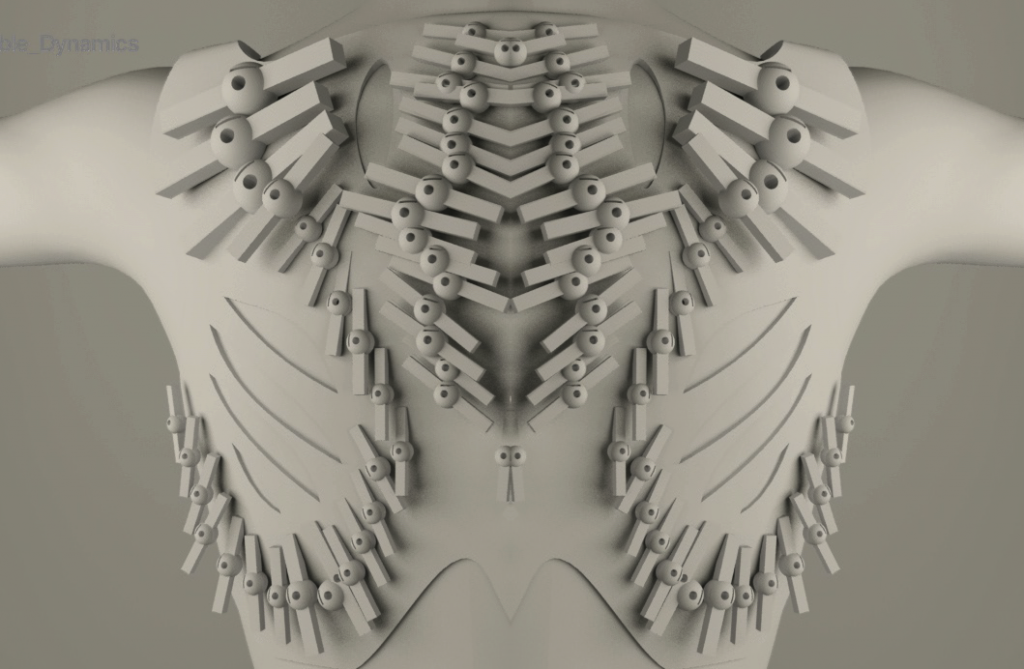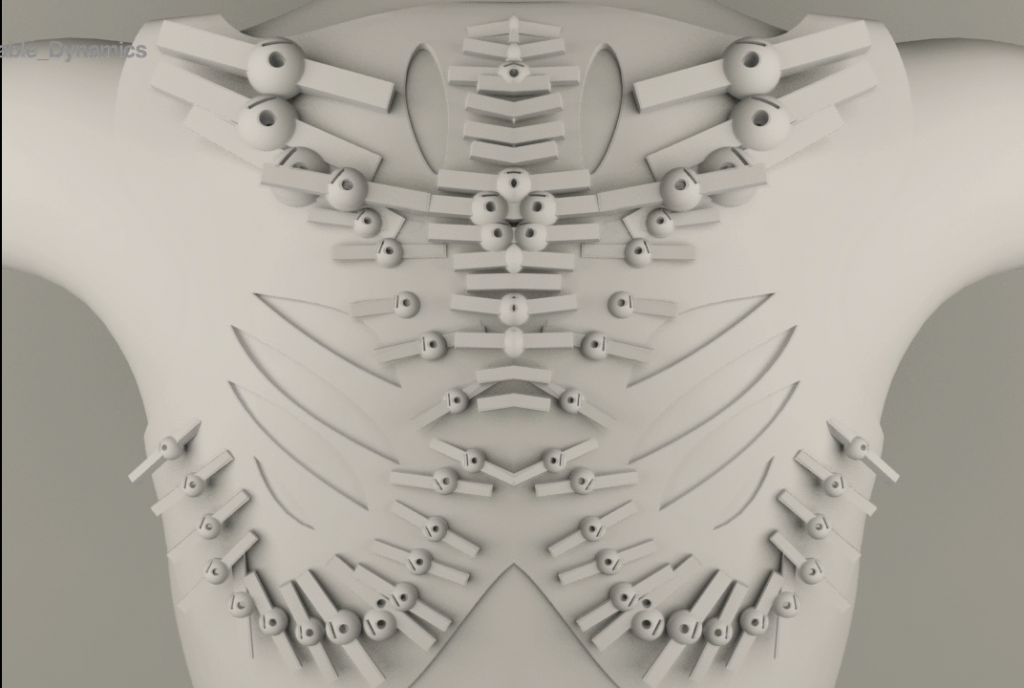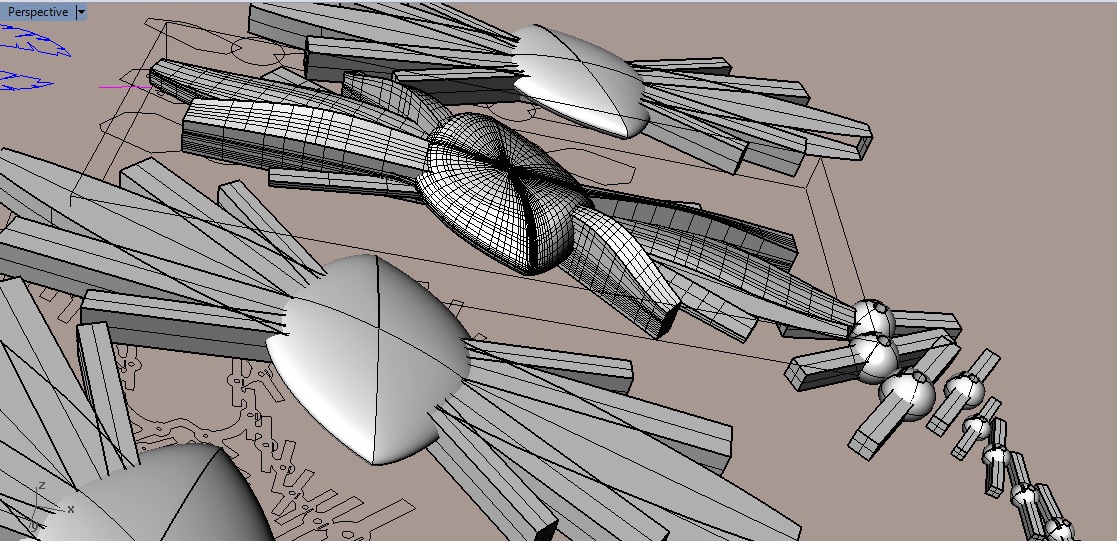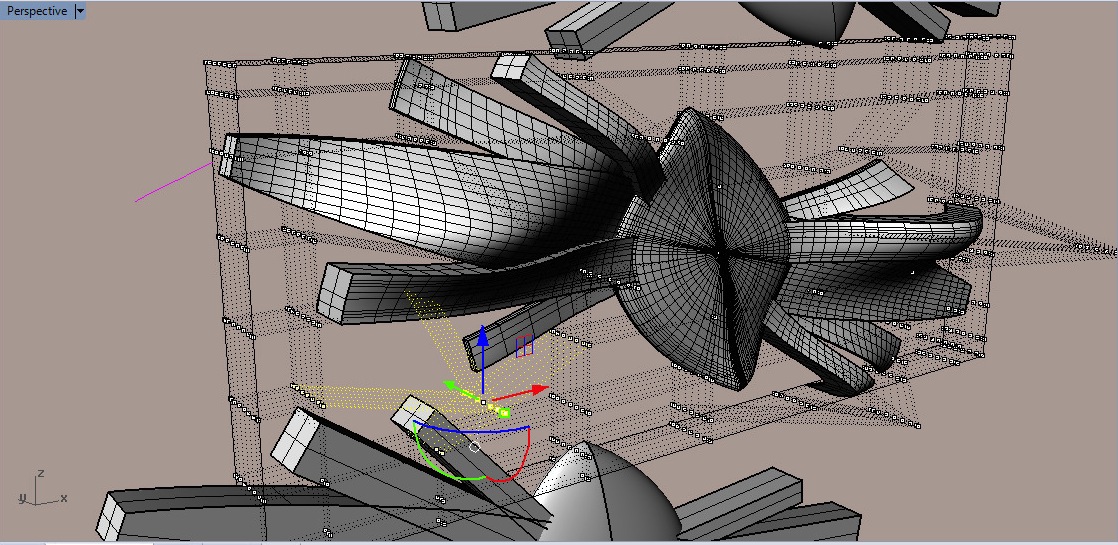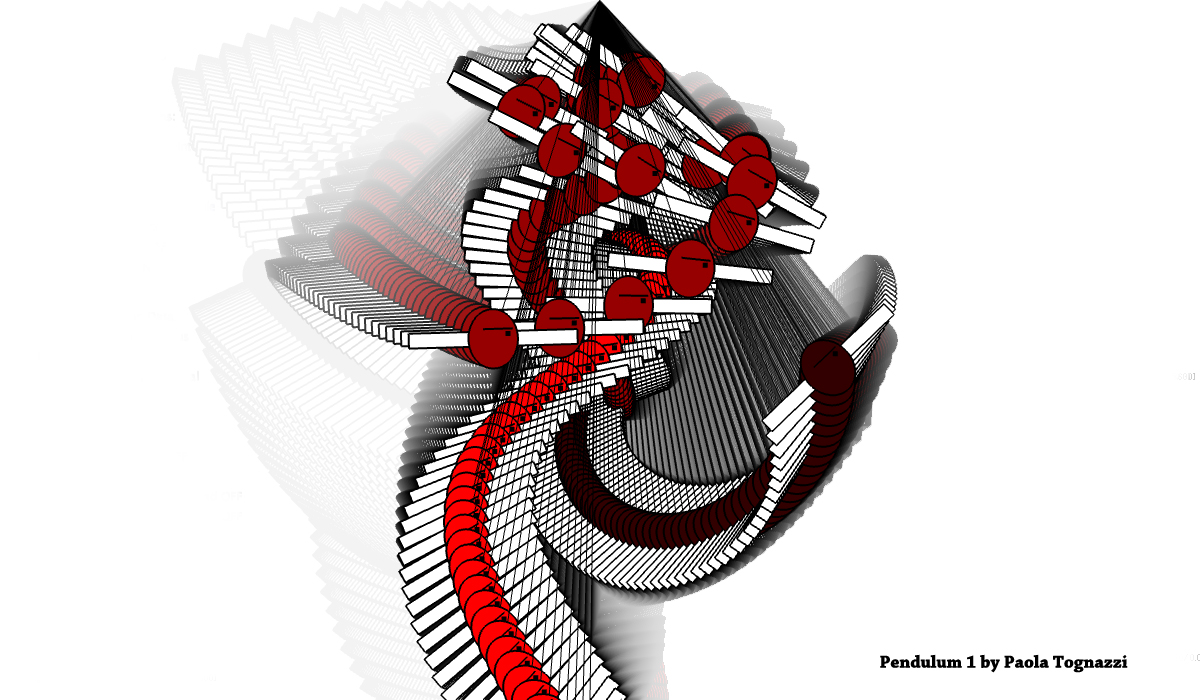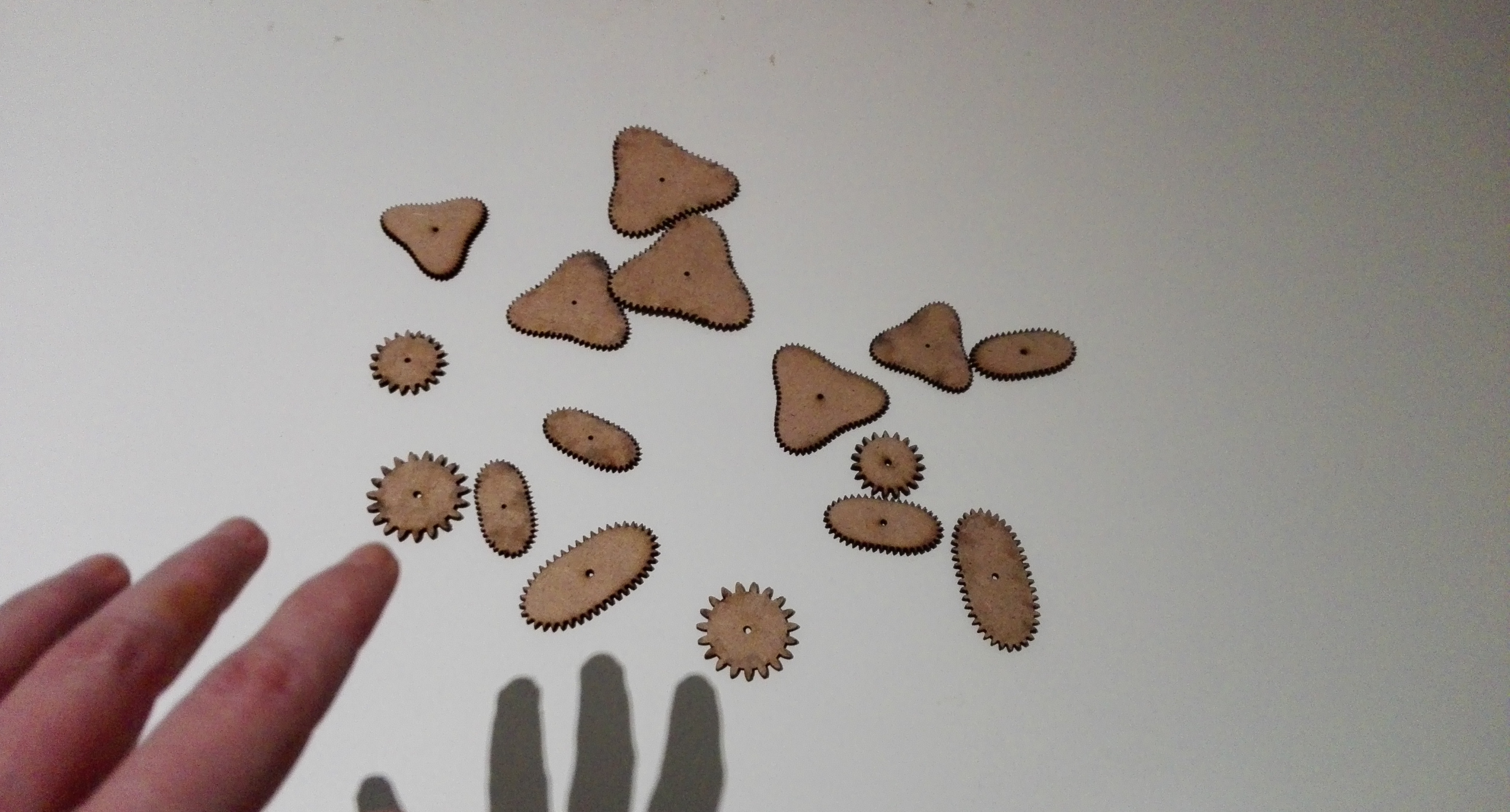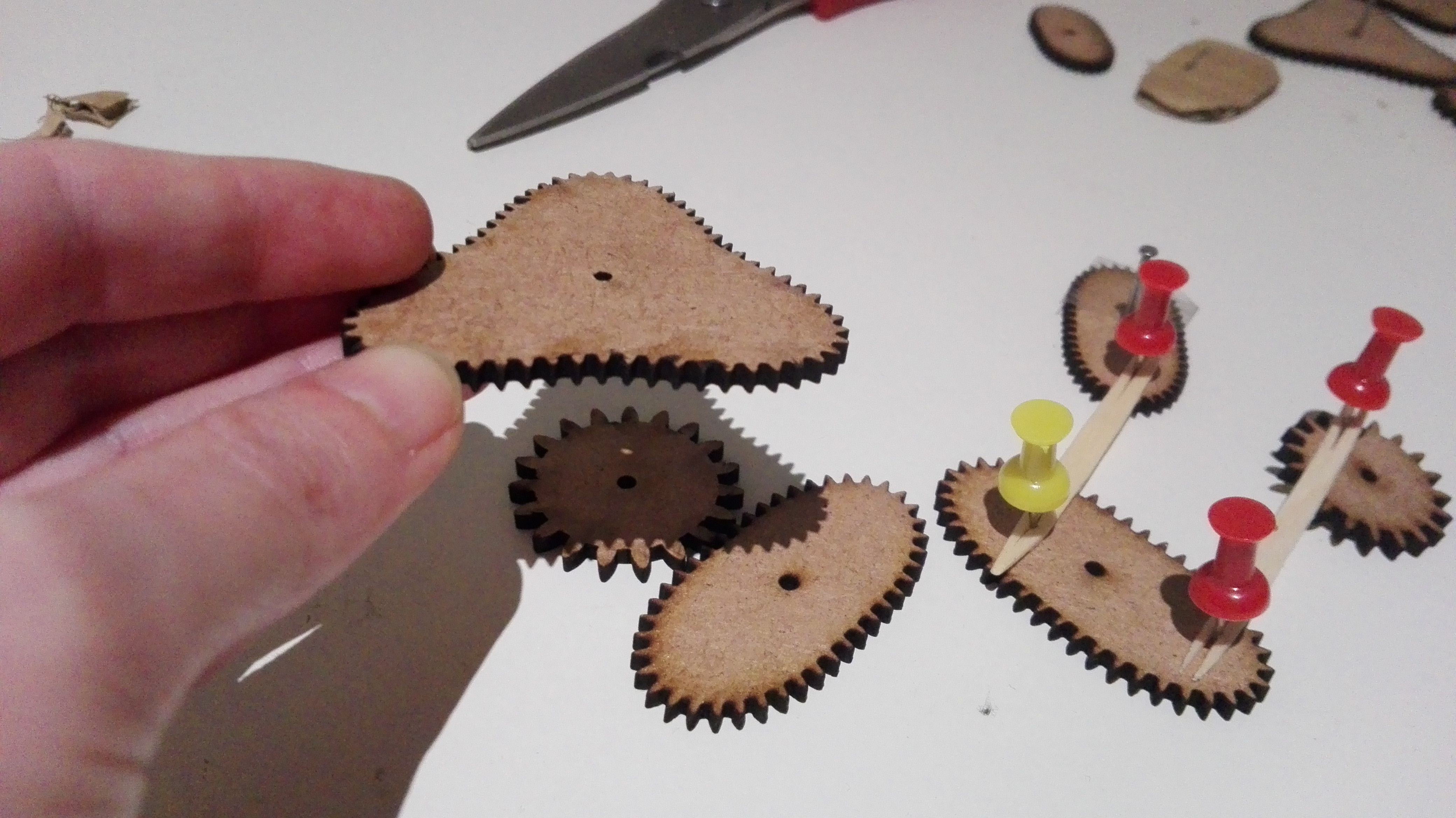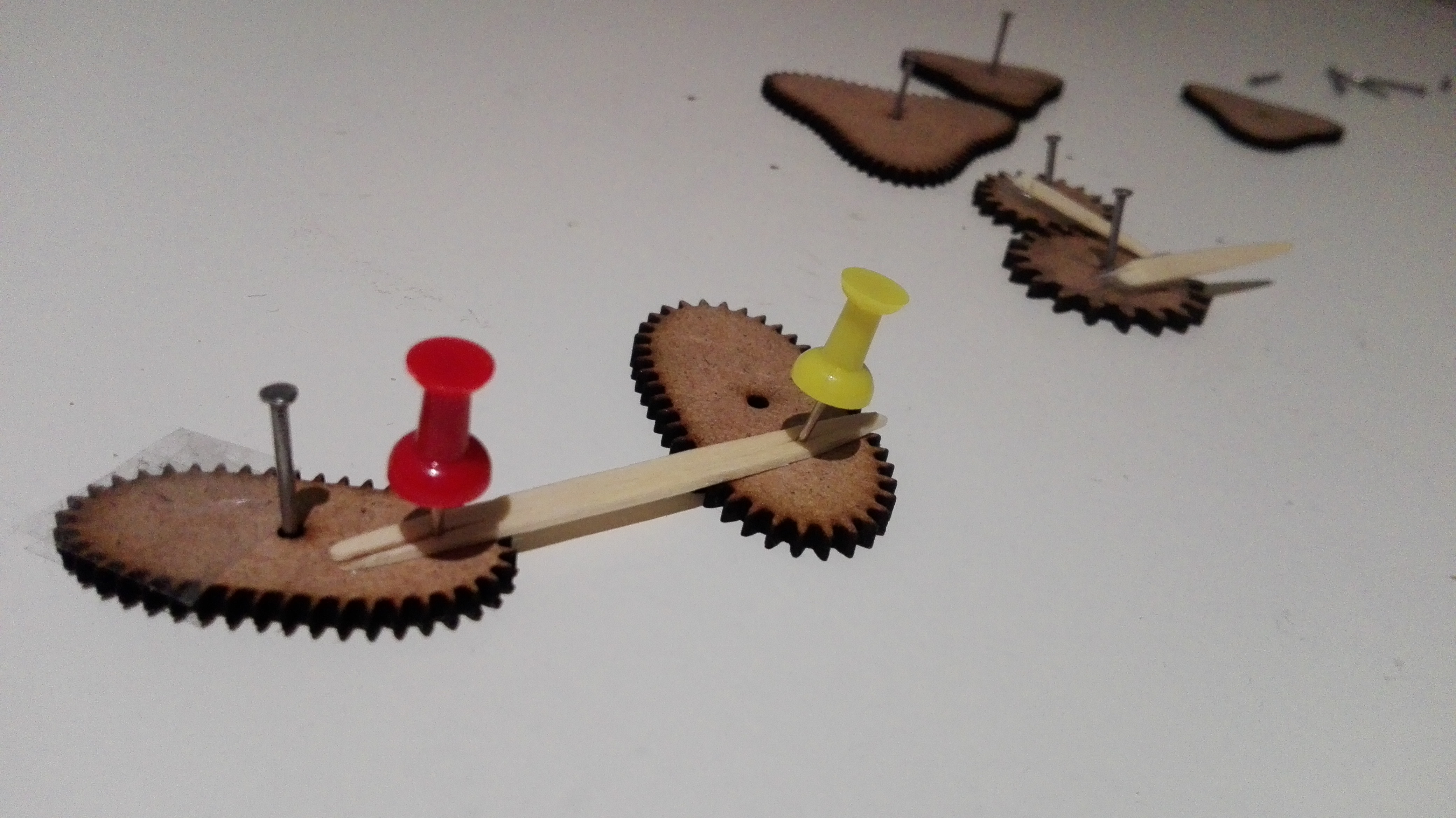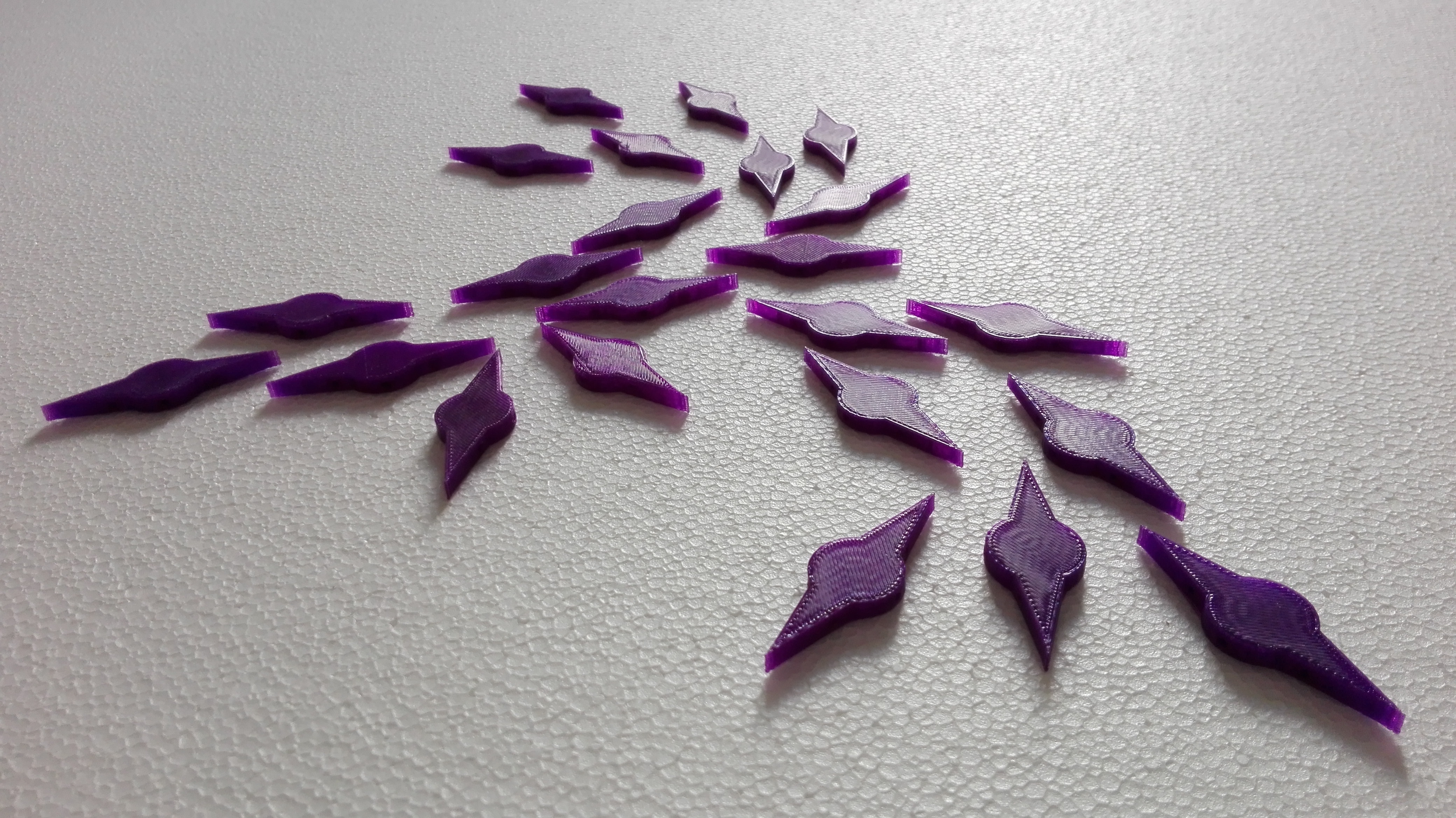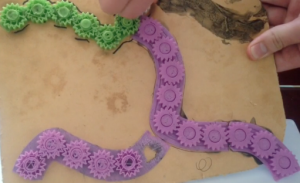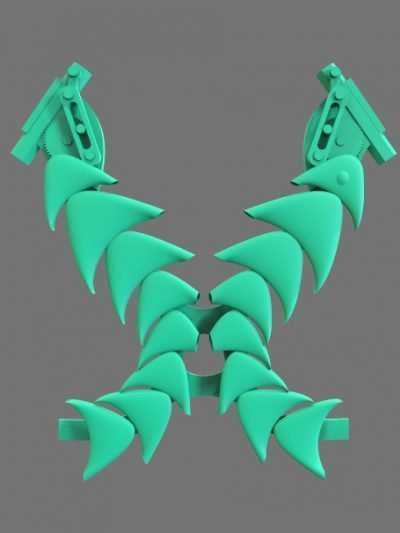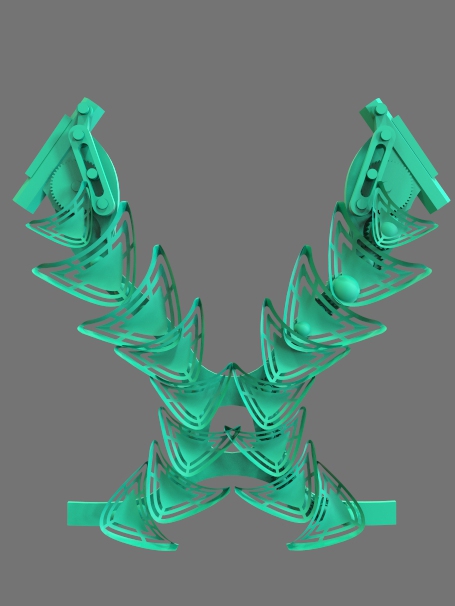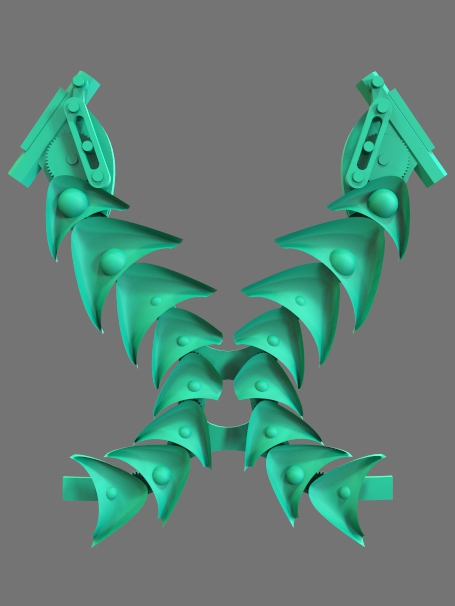FUTURE SKINS
FUTURE SKINS by Paola Tognazzi
Second Skin Evolution Promo by Paola Tognazzi from paola tognazzi on Vimeo.
INTRODUCTION TO FUTURE SKINS
The opportunity of 3D printing technology has led to innovative forms. However these structures are often architectural and static both through their material and design. To date, what’s largely missing in the field of 3D printed wearables is movement.
Future Skins is a project that explores the aesthetics of tangibility and 3Dimensional experiences, in 3D printing technology to create dynamic structures.
We leverage cutting-edge 3D printing technology capabilities, to create dynamics wearable 3D printed structures and integrate them into garments. These structures are designed to respond symbiotically to the wearer’s movements, transforming their form in real time to enhance both function and aesthetics.
The project is part of a serie that explore our desire for evolution navigating the space between what is no longer and what is not yet.
TEAM
This project is a collaboration between the italian artist and physical interaction designer Paola Tognazzi Drake and Mexican expert 3D modeler Jonathan Ramírez Díaz de León and Gianluca Pugliese (WASP) for the prototypes 3D printing of the prototypes.
THE SKIN OUR INTERFACE TO THE WORLD, RESEARCH FOCUS
Our research revolves around three main themes:
Enhancing Proprioception through Sensory Feedback
A key focus of our project is improving proprioception, through dynamic 3D structures capable of providing continuous soft touch feedback.
Often described as the “sixth sense,” proprioception is our body’s ability to perceive its own position in space. This internal sense is crucial for everyday activities like walking, picking up objects, and even standing still.By enhancing proprioception wearable technology can lead to better movement and health outcomes.
Robots That Do Not Need Electricity
We are exploring innovative ways to integrate 3D structures with the body, so that the body becomes the motor triggering the motion of the structure parts without using electronics. This approach allows the body itself to trigger the wearable motion, aligning technology more closely with natural human activity.
The Importance of Movement Directions
Our project places special emphasis on understanding how changes in movement directions contribute to the identity of the structures. Recognizing and harnessing these dynamics are crucial for developing wearables that respond effectively to the user’s movements, enhancing both functionality and user experience.
METHODOLOGY
The project employs a comprehensive research-through-design methodology (RTD) utilizing both simulation tools and physical prototypes to refine the wearable structure design.
The development process includes the use of customised simulation tools to design dynamic modular patterns and laser cutting and 3D printing techniques to explore and test various gear mechanisms and structural designs.
This method allows us to meticulously study the interaction between material and design. By integrating digital technologies and physical prototyping, we are able to observe and adjust the designs in real-time, test step by step the mechanical workings without skipping steps relevant to the functionality of the design.
DETAILED PROCESS OVERVIEW
Designing the 3D Structures
We used a special software called Choreographing Spaces to design the shape of our 3D printed structures. This design was matched to a map of back muscles, allowing us to align the structure modules over the muscles we wanted to target. This alignment aims to help the modules to gently stimulate the muscles through soft, touches, once they start rotating.
GEAR MECHANISMS STUDY
To make these modules move, we researched and developed gears using both laser cutting and 3D printing techniques. These gears are essential for allowing the modules to move smoothly and interact with the wearer’s movements.
3D PRINTED MODULES
DESIGN CHALLENGES
During the project, we tackled several challenges:
• Ensuring the structure closely fits the skin to provide a soft, smooth interaction as the modules move.
• Designing the modules so they can rotate freely, touching the skin to maximize sensory feedback.
• Coordinating how these rotations vary, to ensure a harmonious movement across all modules.
ROTATING GEARS
We experimented with different methods to connect the modules using laser-cut and 3D printed gears. This testing helped us see how various materials affected the functionality and feel of the design.
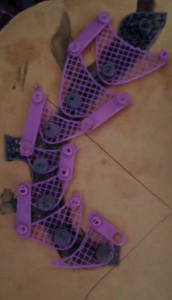
…
…
TESTS OF 3D PRINTED DYNAMIC STRUCTURES
We connected the body’s movements to the gear systems embedded in the garment. This setup turned the wearer’s movements into the driving force of the wearable, essentially making the body the engine of the outfit.This allows the wearer to control the wearable and not the other way around. As a result, the modules begin to rotate and change shape, visually representing the movements of the wearer. This interaction allows the wearer to feel internally what’s happening in their muscles and joints. The movement data collected from the wearer is converted into tactile sensations.
In the future, these mechanisms design could be developed to stimulate wearers muscles and rebuild the brain’s muscle coordination maps.
MORE ABOUT PROPRIOCEPTION
All coordinated movement depends on proprioception. When proprioception is compromised, seemingly simple activities like walking or even standing can become impossibly difficult.
What exactly is proprioception?
You could call it body sense or kinesthetic awareness – it is the brain’s ability to sense the relative positions and movements of the different body parts. Because of proprioception, you know exactly where your hand is in space as you move it around, even though your eyes are closed. Accurate body sense is essential for feeling good in your body and being free of pain.
Body parts communicate with their virtual counterparts through millions of microscopic organs called mechanic receptors located throughout the body. When they are stimulated by a mechanical force, they send a signal through the nervous system to the part of the brain devoted to sensing that part of the body.
The brain assembles all these signals from the innumerable different sources and determines exactly where everything is and what it is doing. In essence, the brain creates numerous maps of the body that it uses to decide what is going on and how to move.
Brains use these maps to make decisions about how to move and the better and more detailed these maps are, the better and more precise are the movement. In contrast, if the map is unclear or fuzzy, navigation of the different movement possibilities will be shaky.
When one stops moving a body part, the brain starts deleting the maps for its coordination thus compromising proprioception.
MAPS ARE BUILT BY MOVEMENT
The health of the virtual bodies in the brain is just as important as the actual bodies (and changing them is often quicker and easier as well.)
People in general are much more aware of the movements of the limbs (arms and legs) than the ones of the muscles in the torso and back. One reason is because we can see the arms and legs moving while we don’t see as easily the movement of the other muscular groups . Another reason is that the former move much more in space while the latter although they are more important and do a lot more work, move within a more limited distance range. Because of this it’s quite common an incorrect use and placement of those muscles, or the lack of engagement of those groups, which leads to back pain, enjeries etc. etc.
CONCLUSION
The interactive rotation of the future skins suit 3D modules, placed on the back dorsal ancho muscular fascia, can create a gentle touch on the skin, and a reminder of those muscles existence. Thus stimulating the proprioceptive maps of those body parts.
This research project has embarked on an ambitious journey to redefine wearable technology, not as a mere augmentation but as an active participant in promoting physical awareness and health.While the current phase of our research has laid a substantial groundwork, it has also encountered several challenges.
As of now, we have achieved several mechanical design strategies for the operation of the modules necessary for sensory feedback through friction. However, these designs would benefit from additional resources to achieve smoother operational results.
Despite the limitations, we are encouraged by the progress we have made and believe strongly in the potential of this direction. To this end, we encourage wearable technology researchers and developers to build upon our findings. There is substantial opportunity for innovation in enhancing the integration of these technologies into daily wearables. Further research can explore alternative materials, advanced fabrication techniques, and more sophisticated sensor integrations to realize the full potential of our preliminary designs. We hope that our contributions will serve as a catalyst for future advancements, driving the field toward more intuitive and beneficial wearable technologies that seamlessly enhance human capabilities.
VIDEO DOCUMENTATION OF THE PROCESS
Second Skin Evolution by Paola Tognazzi from paola tognazzi on Vimeo.


